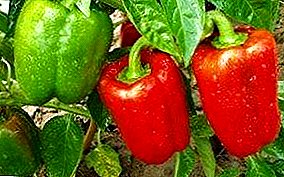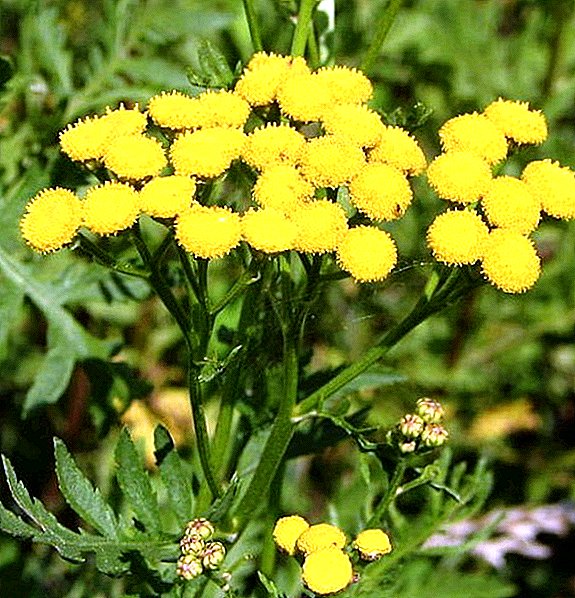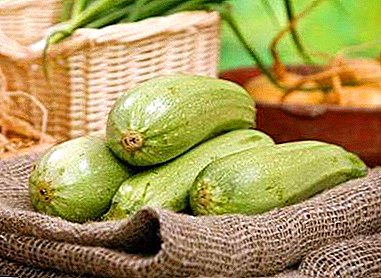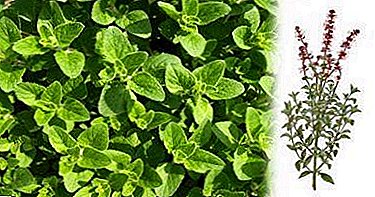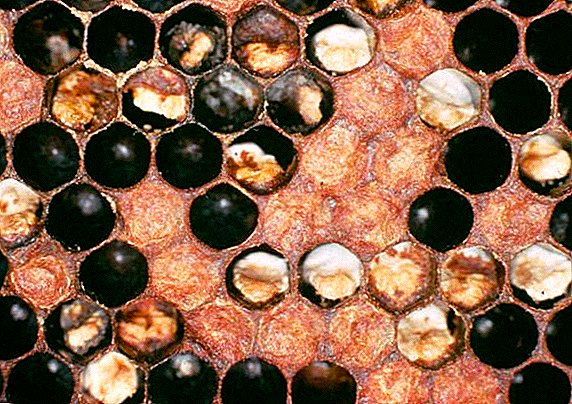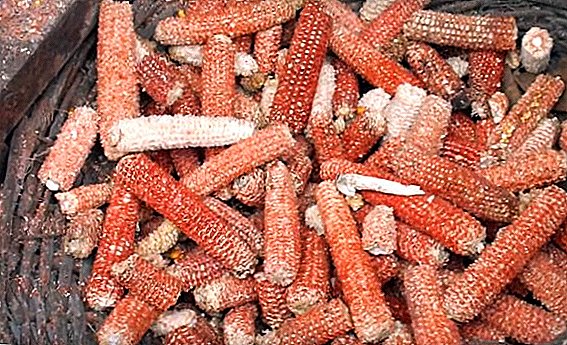 Corn is of great importance as one of the important foods for people and animals, due to its high content of nutrients.
Corn is of great importance as one of the important foods for people and animals, due to its high content of nutrients.
When growing it as food, it is necessary to separate the grains from the cobs. This process is rather troublesome.
Therefore, to make it easier, you can make a special corn husk with your own hands.
Now we will show you how to do it.
Description and main components
The device for cleaning corn from cobs has many names: sheller, rushka, crusher, sheller, pulling, etc. This device is a device that is equipped with teeth and a motor. Made by hand, it allows you to greatly simplify and speed up the process of peeling, separating the grain in almost a few minutes. In this case, the person is required only to fill the ears into the device.
A device for cleaning corn may be large, designed for several cobs (one or two bags), and small, where one head is placed.
Did you know? Corn - one of the most ancient and edible cultures. Thus, the average Mexican consumes about 90 kg of corn over the course of a year, and about 73 kg per each American.
 The hand-made corn flake for corn and grain, which we tell you, consists of:
The hand-made corn flake for corn and grain, which we tell you, consists of:- removable casing with three holes (one for sleeping the cobs, the other (with a flap) for exiting bare stalks, the third for exiting separated grains) and a lid;
- shelling metal disc with teeth;
- gutters for exit of the separated grains;
- engine (1.5 kW, up to 1450-1500 revolutions per minute);
- vertical shaft with bearings;
- drive belt;
- a capacitor;
- legs with legs.
Useful on the farm may be: an extruder, a chopper, a pile hiller, a potato planter, a honey extractor, an ovoscope, an incubator, a mini-tractor, a mower.The body is made from an old cylindrical washing machine (a gas cylinder is also suitable), the top of which is covered with a lid. Two holes must be made in the case: one should be closed on the flap with a hook or latch - peeled ears will fly out of it, the chute should be welded to the other - cleaned grains will go out of it carefully. In the center of the bottom is another small hole for the shaft. The case is placed on the stand on the legs.
 In the middle of the body a shelling disk is mounted on the shaft, which can be made in several ways. It is made of metal with a thickness of 4 mm. In the video you are offering, the craftsman made eight rows of teeth about 8 mm high on it. According to the master, it is thanks to this device that the corn grain is not damaged, but leaves 100% intact. Throughout the disk it is necessary to make holes in which the grains will be poured. In our case, long holes are made directly near each row of teeth.
In the middle of the body a shelling disk is mounted on the shaft, which can be made in several ways. It is made of metal with a thickness of 4 mm. In the video you are offering, the craftsman made eight rows of teeth about 8 mm high on it. According to the master, it is thanks to this device that the corn grain is not damaged, but leaves 100% intact. Throughout the disk it is necessary to make holes in which the grains will be poured. In our case, long holes are made directly near each row of teeth.The disk should be 1.5-2.5 cm smaller in diameter than the bottom. The gaps between the disk and the side walls are designed to get there grains and dumping them into the chute.
There are also tips on how to drill holes in the disk and screw bolts in them, which will repel the grain from the cob. They can be as many or just a couple of pieces.
Important! It is advisable to fasten all parts with bolts of the same diameter so that in case of additional configuration or repair, you can use one key for all connections..
A motor is installed under the stand on legs, the shaft is fixed. On the back of the stand is attached start button or control unit.  The body should be tightly closed with a lid so that during operation of the device the cob does not fly out. There is an interesting option when a cob tray is attached on top of the lid, the bottom of which closes on the flap.
The body should be tightly closed with a lid so that during operation of the device the cob does not fly out. There is an interesting option when a cob tray is attached on top of the lid, the bottom of which closes on the flap.
This design will save some time, because while one batch of cobs is in the cylinder, another at this time can already be loaded into the tray and then just open the flap so that they fall asleep inside the unit. In any case, it should be easy and convenient to open the lid, but it should not be lifted during the peeling.
In any case, it should be easy and convenient to open the lid, but it should not be lifted during the peeling.
Principle of operation of the device
The principle of operation of homemade corn cultivators is simple. Corn cobs are poured from above into the body of the machine. Then the motor turns on, which with the help of a belt begins to rotate the shaft and, accordingly, the shelling disk.
Important! The disc should not rotate faster than 500 revolutions per minute, otherwise the grains will be badly damaged and the cobs break. The motor should not make more than 1500 revolutions per minute. Thus, the shaft speed will need to be reduced three times.
Teeth or other growths on the disk knock the grain out of the cobs. They fall into the holes and gaps, fall to the bottom of the body and with the help of rotating one or more blades, centrifugal force and air flow into the chute, which then go into the pre-set container or tied bag.
With the help of gravity and centrifugal force, the full cobs go down and are crushed by teeth, and already empty - go up. When you open the flap to exit the cleaned cobs, they fly to the ground. 
Ornaments on which the eye rests can be: garden figures, a dry stream, a bed of stones, an alpine slide, a fountain, gabions, stumps, flower beds, wattle, rock arias, and a trellis.
Tips and tricks for making
- Before you make a corn grinder with your own hands, draw a drawing of it and carefully consider how all the details will be attached. So you will understand what tools you need and what fasteners you will use.
- The opening for the exit of the cleaned cobs can be made in such a way that it can be put on and tied to the bag. This will allow you to quickly collect the cobs in one place and not waste time collecting them all over the yard.
- If you use a gas cylinder as a casing, then you need to be extremely careful before cutting it, because there may be residual gas. With technology, how to properly clean them from capacity, you should first get acquainted on the web.
- Usually the electric motor turns the shaft with a belt, but if the motor is not too powerful, you can attach it directly to the shaft. The main thing - to adjust the shaft so that the number of revolutions of the disk does not exceed 500.
- For the convenience of moving the shelling unit from the back room to the street, the wheels can be attached to the legs.

Did you know? In addition to the fact that corn is used as a food product, it is also used to make paints, plaster, plastic, glue, alcohol, and cosmetics.
Now you know how to peel corn at home quickly and without much hassle. The self-made unit offered to you does not consume much energy and does not require special knowledge in the manufacture. It can be made in one day. It is enough to use ready-made drawings and tips, as well as get acquainted with the type and principle of work of sheller on the video.
If you do not have suitable materials, or simply do not have time to "master", you can purchase a ready-made device. In any case, the sheller, whether it is purchased or made by hand, will be for you the solution to the problem of how to peel corn at home.


